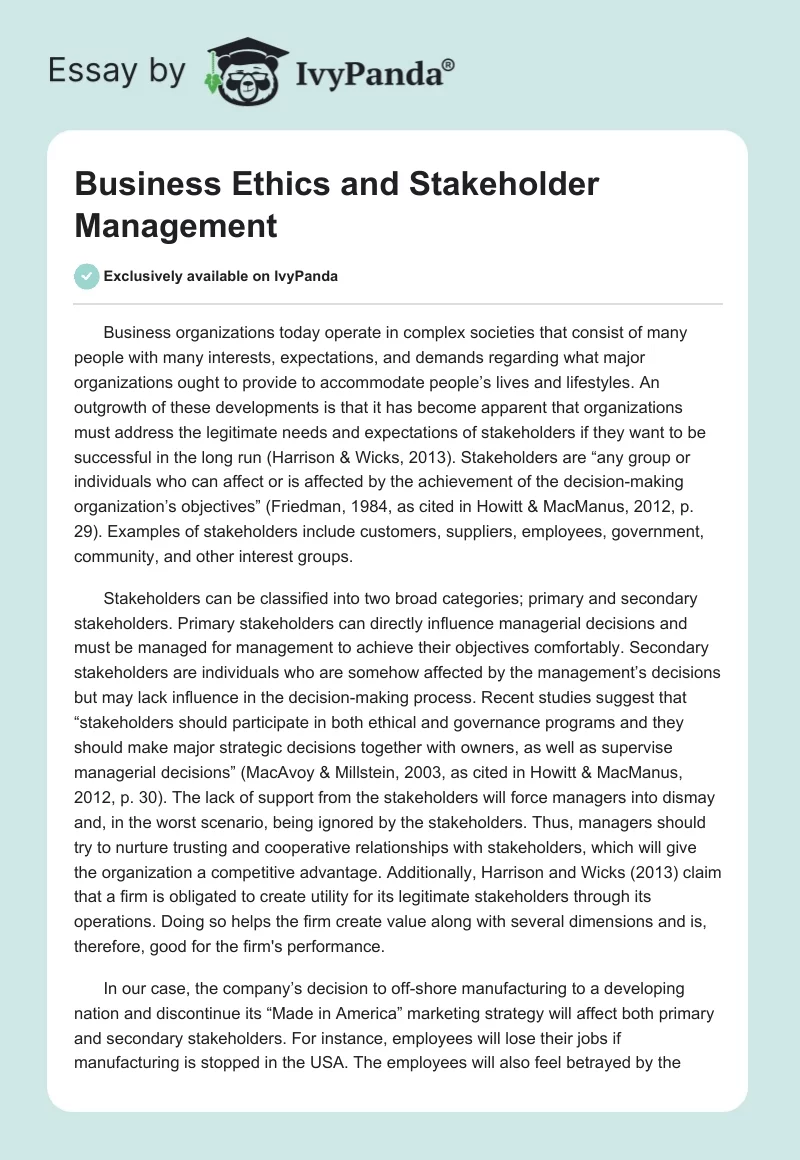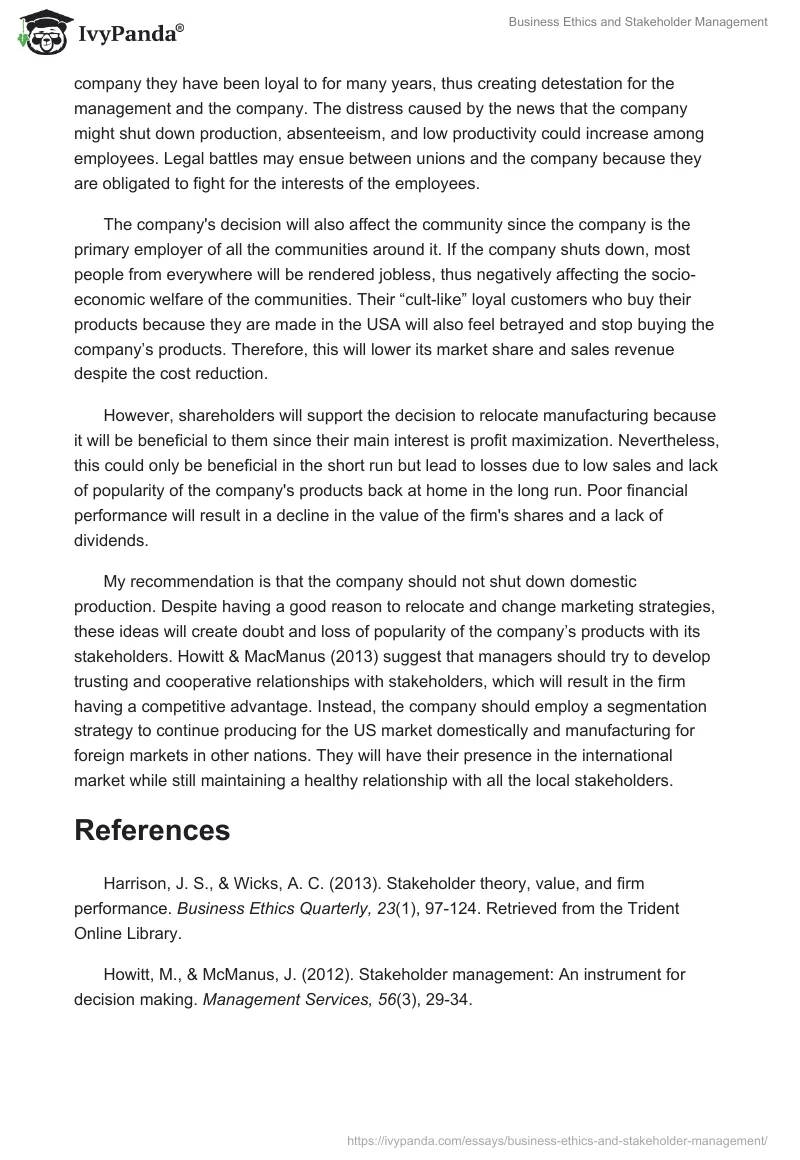Business organizations today operate in complex societies that consist of many people with many interests, expectations, and demands regarding what major organizations ought to provide to accommodate people’s lives and lifestyles. An outgrowth of these developments is that it has become apparent that organizations must address the legitimate needs and expectations of stakeholders if they want to be successful in the long run (Harrison & Wicks, 2013). Stakeholders are “any group or individuals who can affect or is affected by the achievement of the decision-making organization’s objectives” (Friedman, 1984, as cited in Howitt & MacManus, 2012, p. 29). Examples of stakeholders include customers, suppliers, employees, government, community, and other interest groups.
Stakeholders can be classified into two broad categories; primary and secondary stakeholders. Primary stakeholders can directly influence managerial decisions and must be managed for management to achieve their objectives comfortably. Secondary stakeholders are individuals who are somehow affected by the management’s decisions but may lack influence in the decision-making process. Recent studies suggest that “stakeholders should participate in both ethical and governance programs and they should make major strategic decisions together with owners, as well as supervise managerial decisions” (MacAvoy & Millstein, 2003, as cited in Howitt & MacManus, 2012, p. 30). The lack of support from the stakeholders will force managers into dismay and, in the worst scenario, being ignored by the stakeholders. Thus, managers should try to nurture trusting and cooperative relationships with stakeholders, which will give the organization a competitive advantage. Additionally, Harrison and Wicks (2013) claim that a firm is obligated to create utility for its legitimate stakeholders through its operations. Doing so helps the firm create value along with several dimensions and is, therefore, good for the firm’s performance.
In our case, the company’s decision to off-shore manufacturing to a developing nation and discontinue its “Made in America” marketing strategy will affect both primary and secondary stakeholders. For instance, employees will lose their jobs if manufacturing is stopped in the USA. The employees will also feel betrayed by the company they have been loyal to for many years, thus creating detestation for the management and the company. The distress caused by the news that the company might shut down production, absenteeism, and low productivity could increase among employees. Legal battles may ensue between unions and the company because they are obligated to fight for the interests of the employees.
The company’s decision will also affect the community since the company is the primary employer of all the communities around it. If the company shuts down, most people from everywhere will be rendered jobless, thus negatively affecting the socio-economic welfare of the communities. Their “cult-like” loyal customers who buy their products because they are made in the USA will also feel betrayed and stop buying the company’s products. Therefore, this will lower its market share and sales revenue despite the cost reduction.
However, shareholders will support the decision to relocate manufacturing because it will be beneficial to them since their main interest is profit maximization. Nevertheless, this could only be beneficial in the short run but lead to losses due to low sales and lack of popularity of the company’s products back at home in the long run. Poor financial performance will result in a decline in the value of the firm’s shares and a lack of dividends.
My recommendation is that the company should not shut down domestic production. Despite having a good reason to relocate and change marketing strategies, these ideas will create doubt and loss of popularity of the company’s products with its stakeholders. Howitt & MacManus (2013) suggest that managers should try to develop trusting and cooperative relationships with stakeholders, which will result in the firm having a competitive advantage. Instead, the company should employ a segmentation strategy to continue producing for the US market domestically and manufacturing for foreign markets in other nations. They will have their presence in the international market while still maintaining a healthy relationship with all the local stakeholders.
References
Harrison, J. S., & Wicks, A. C. (2013). Stakeholder theory, value, and firm performance. Business Ethics Quarterly, 23(1), 97-124. Retrieved from the Trident Online Library.
Howitt, M., & McManus, J. (2012). Stakeholder management: An instrument for decision making. Management Services, 56(3), 29-34.


